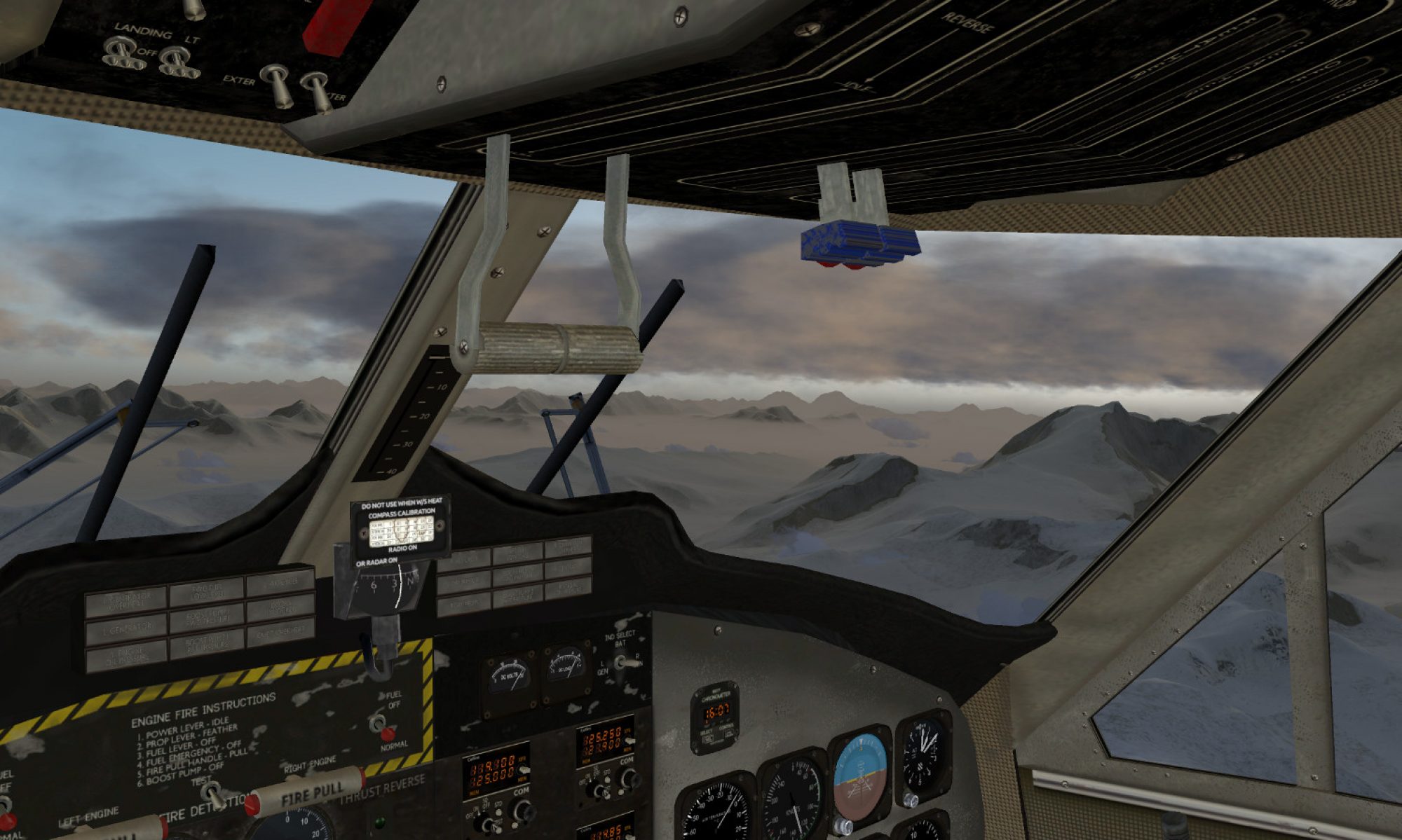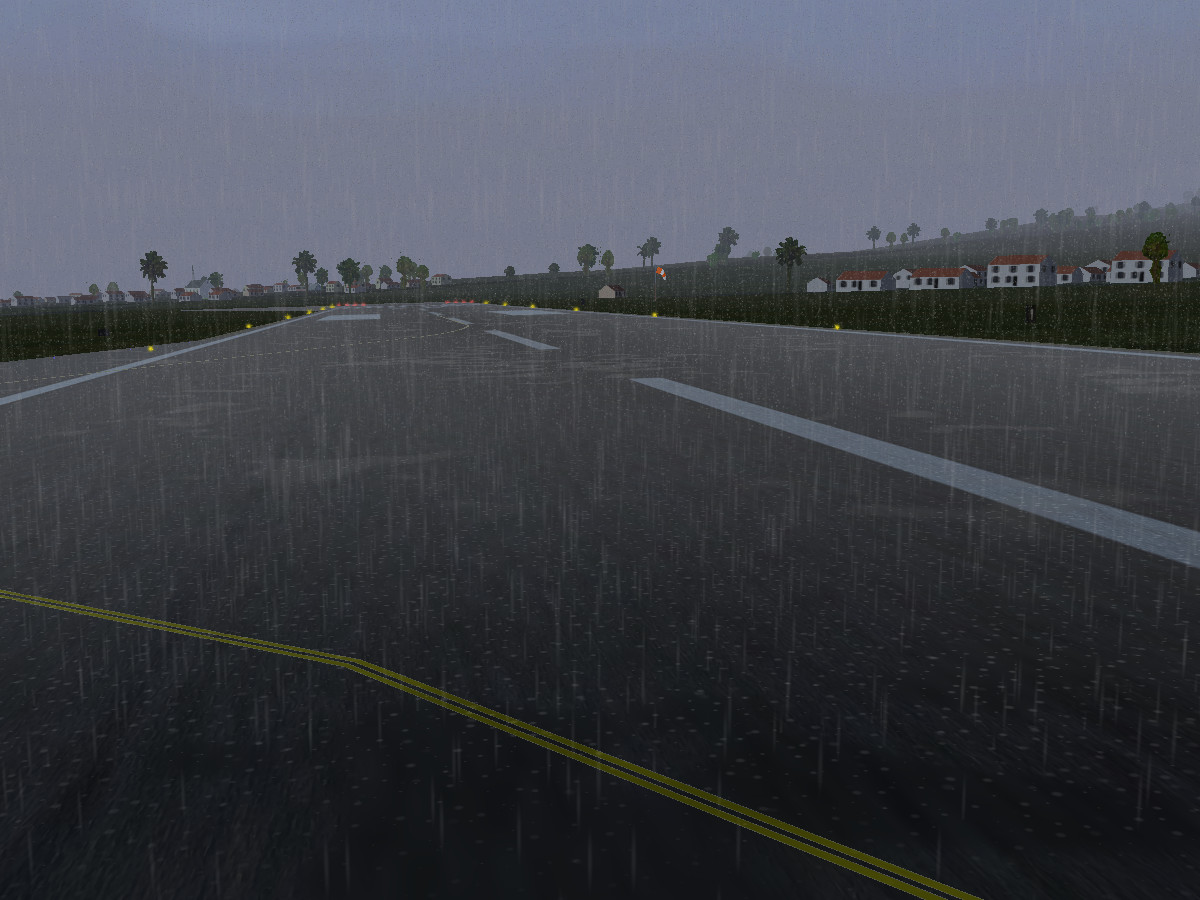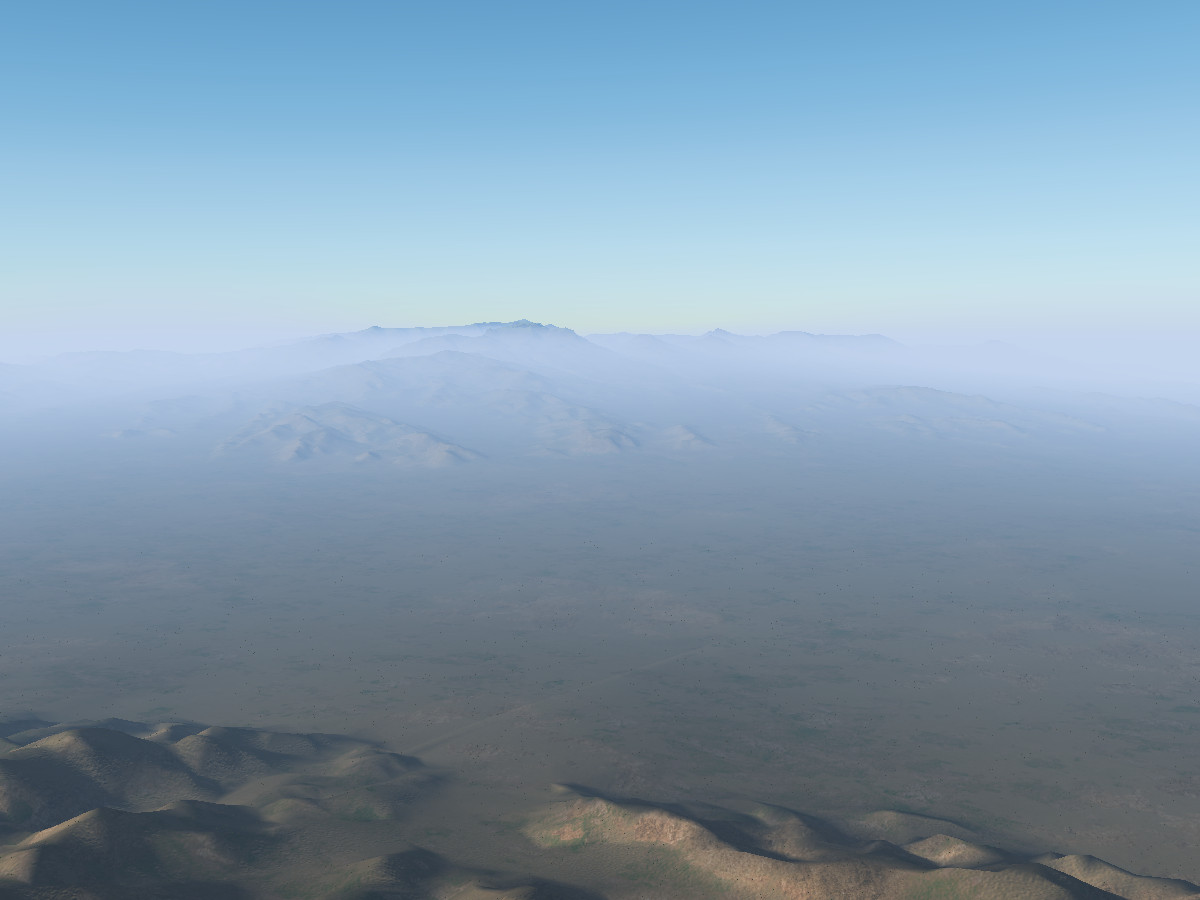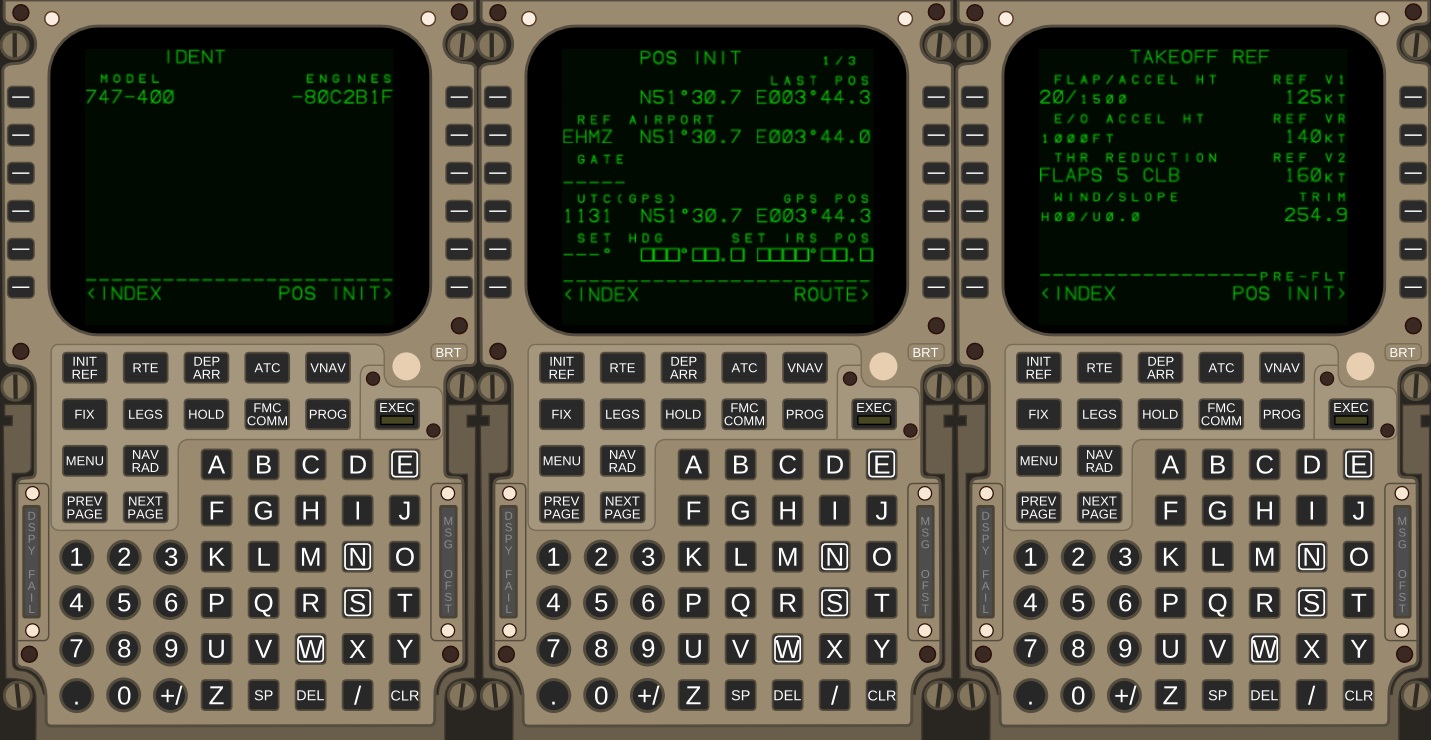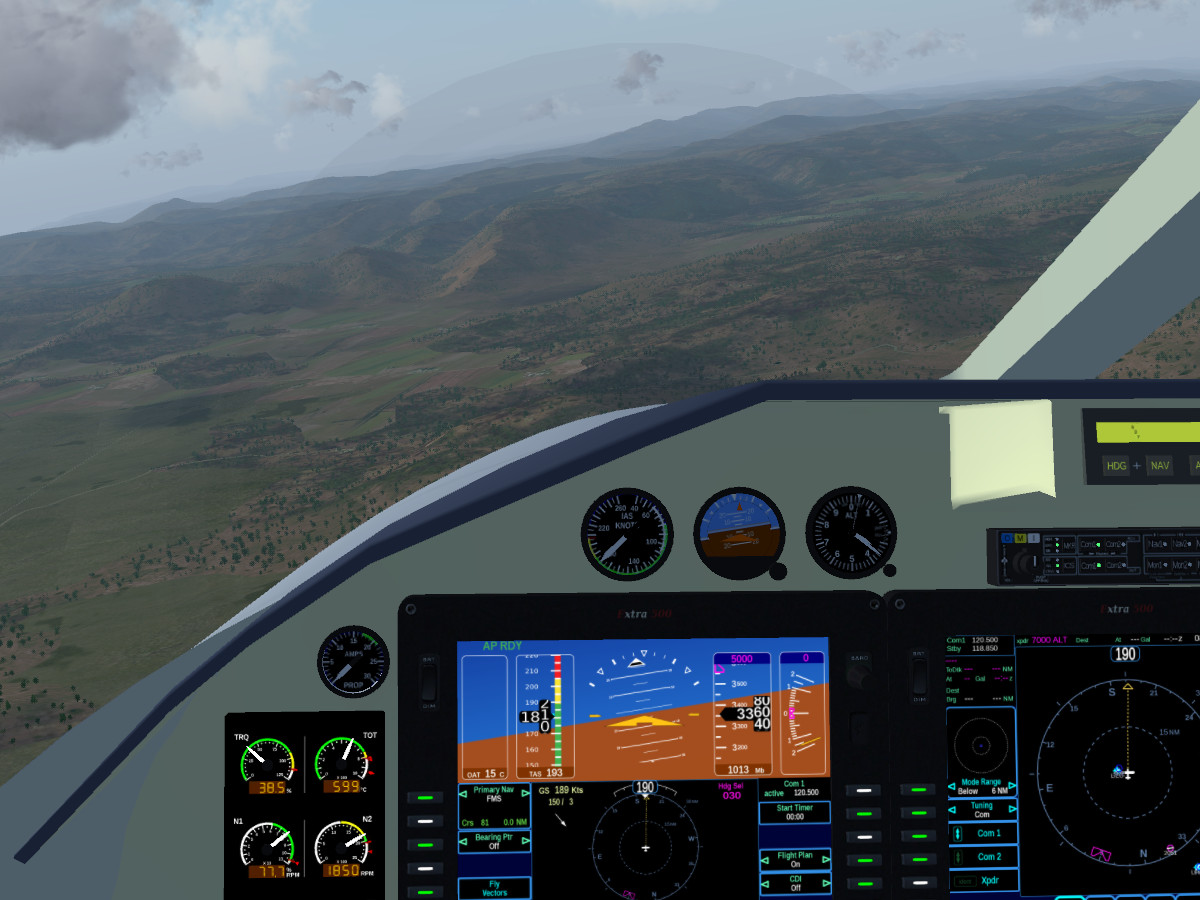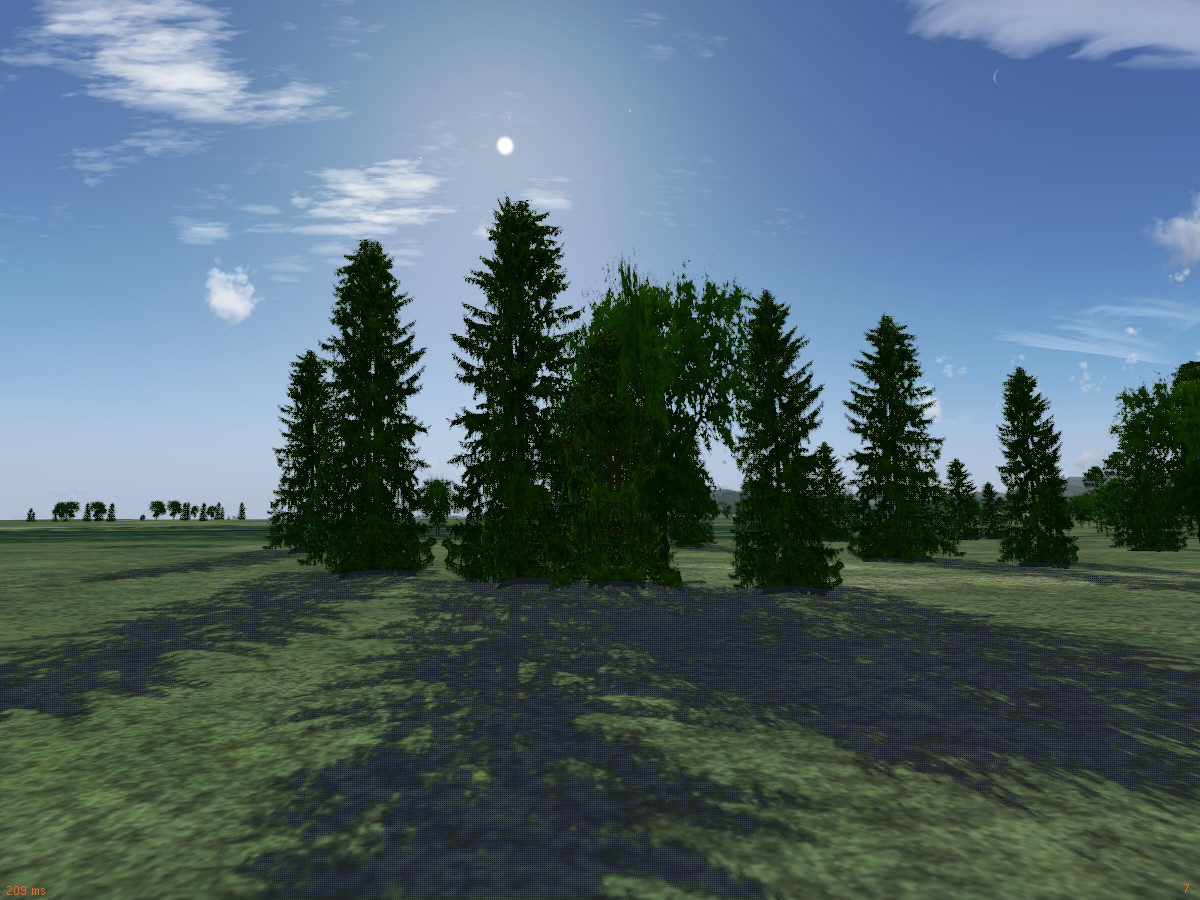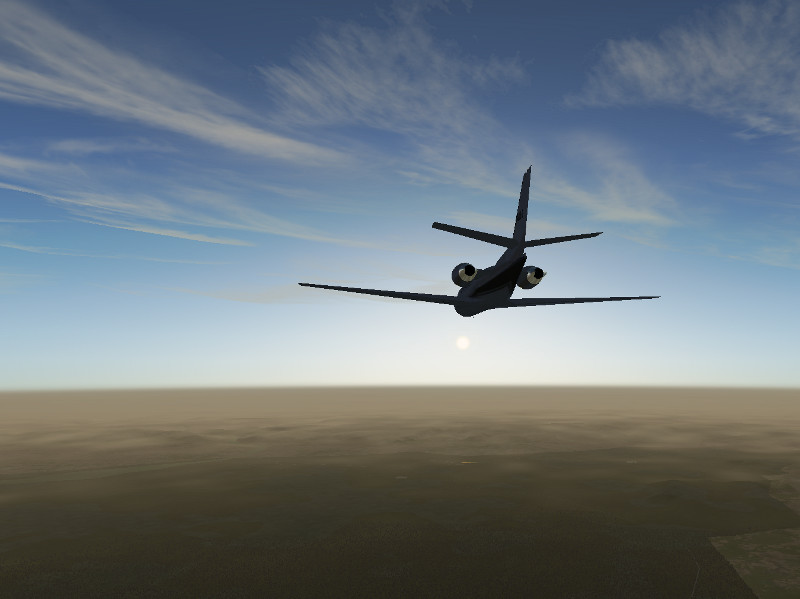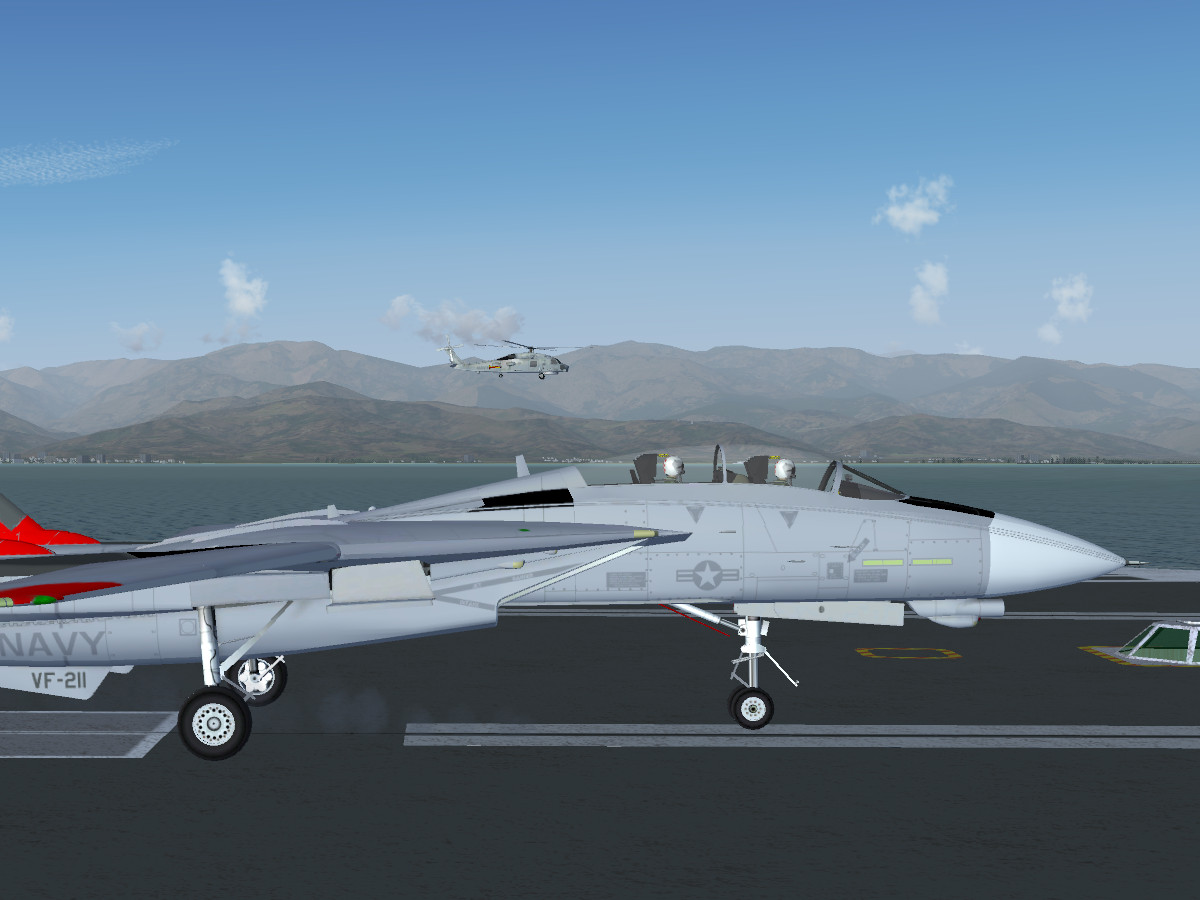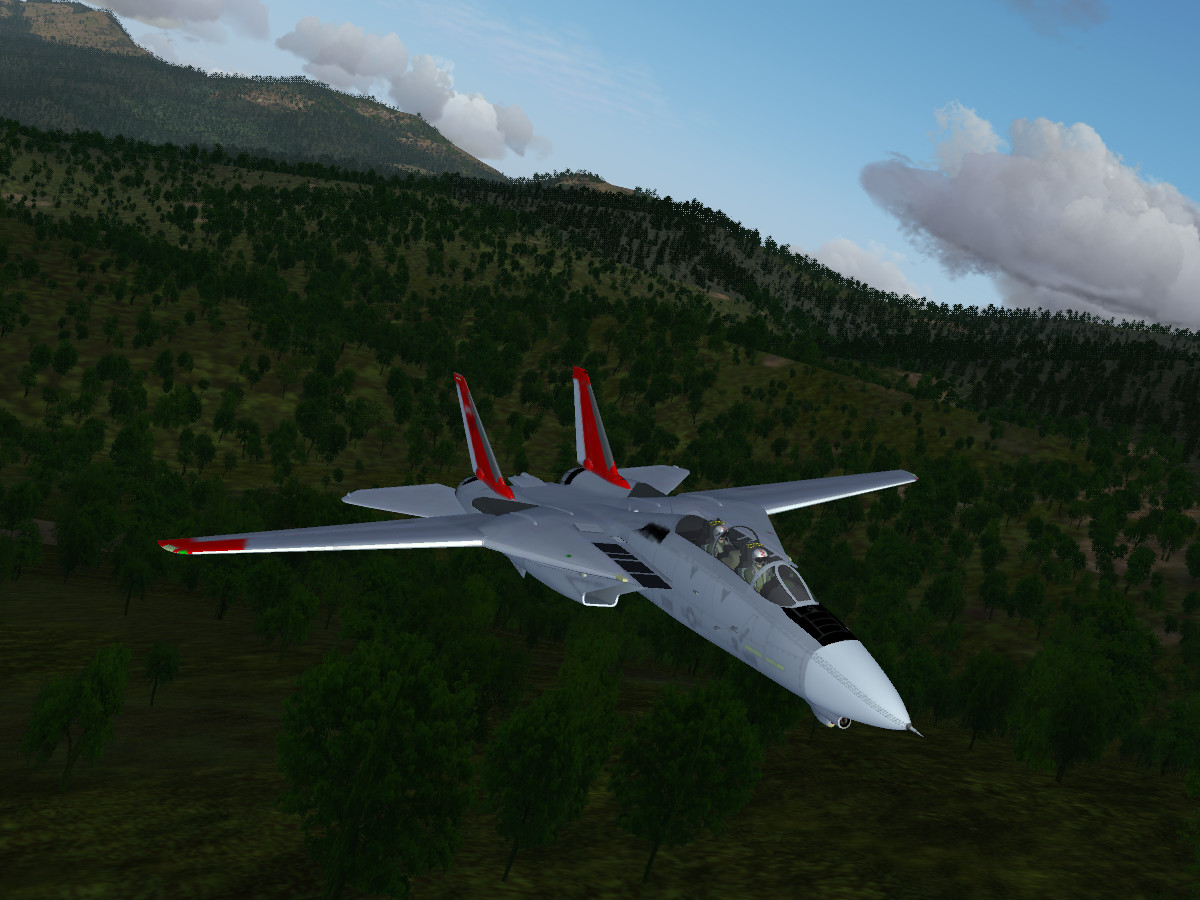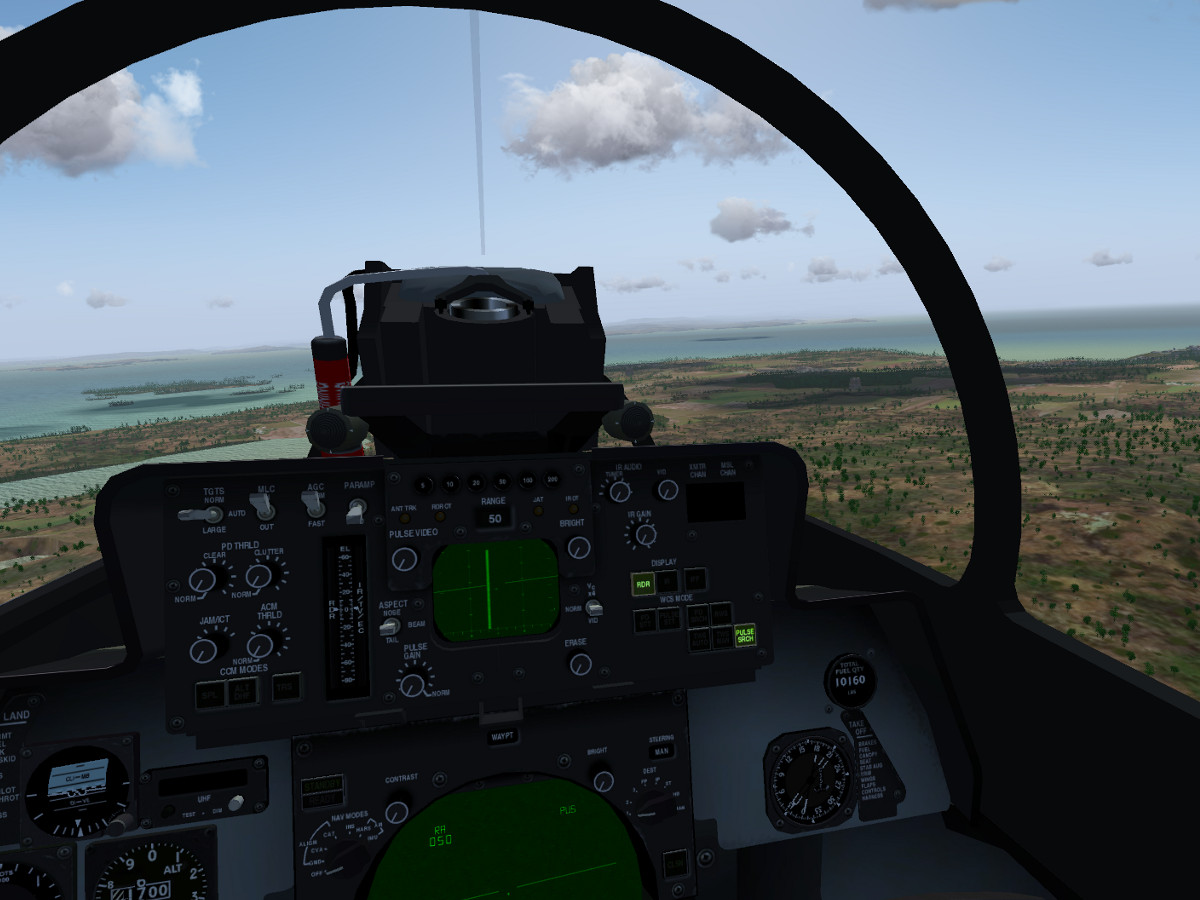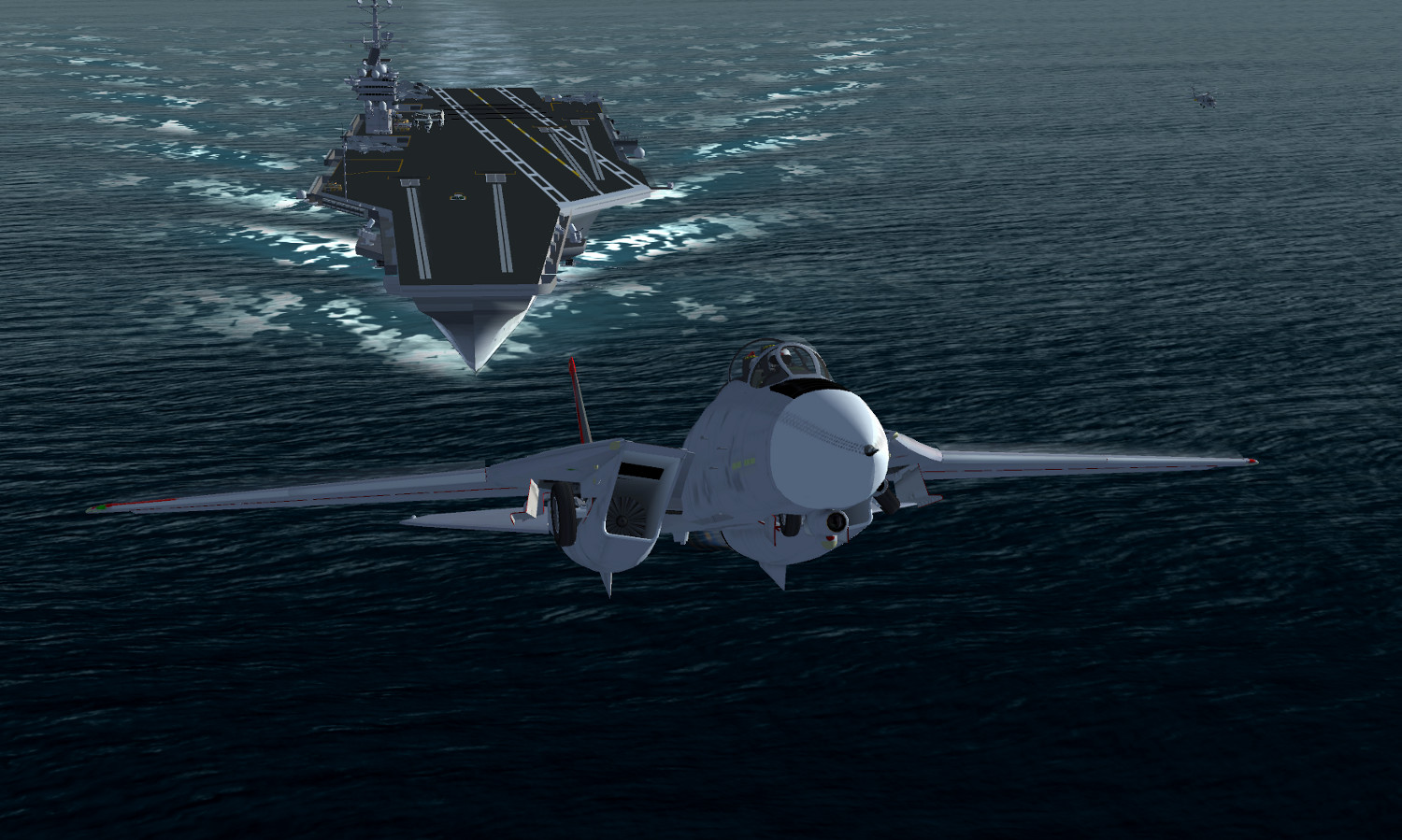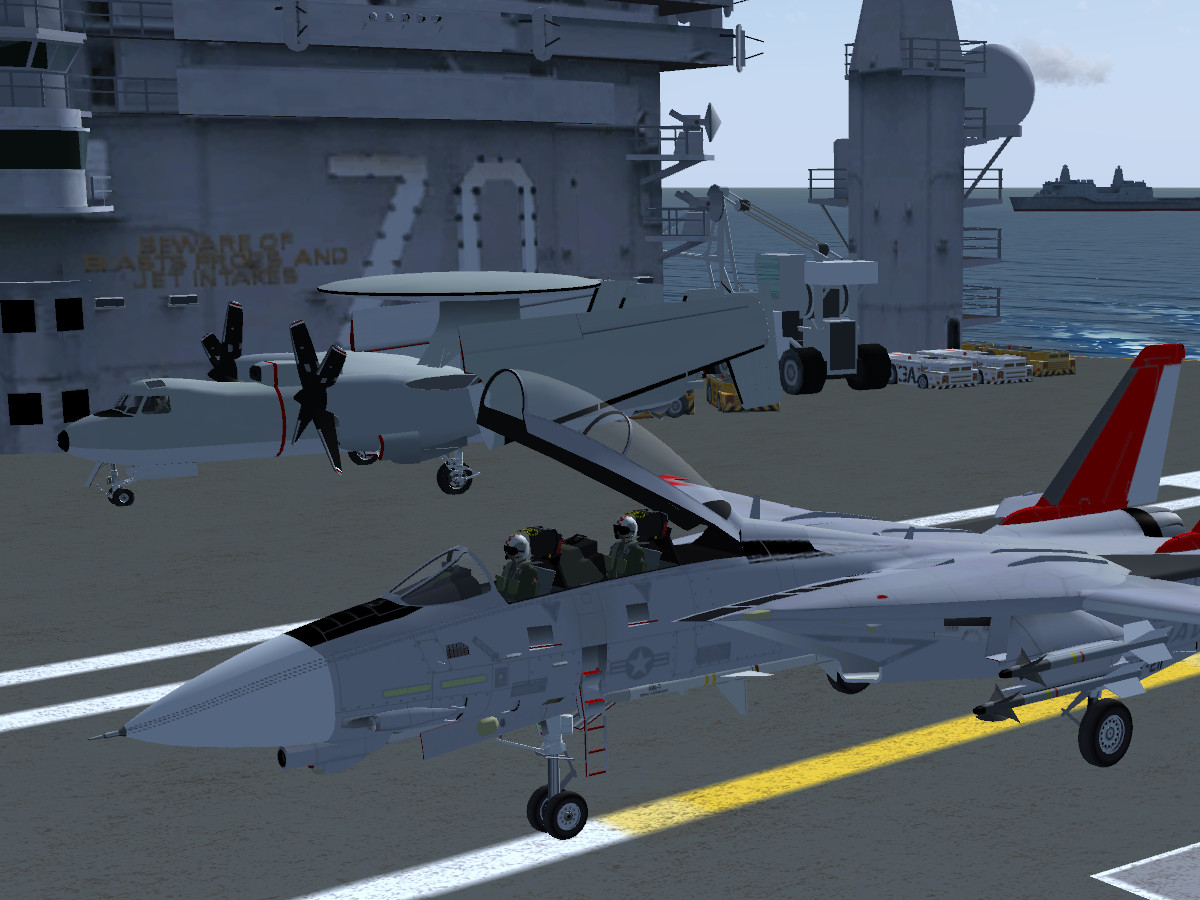Flightgear is constantly under development and as the feature freeze for the next 3.2 release approaches, it is becoming increasingly clear what the next version will have to offer to users:
(to avoid misunderstandings – this is a selection of features currently under development and not a release note, i.e. there is no guarantee that all items will appear in 3.4, nor are the features of 3.4 limited to what is listed here)
Precipitation
Added realism for precipitation:
The precipitation system has been partially upgraded. The speed of falling raindrops now follows a physical scaling with droplet size, and the system renders now hail in addition to rain and snow. The correct dependence of lighting with illumination of the scene has been added. In Advanced Weather, droplet size and rain intensity are now set independently, allowing to realistically render fine spray as well as splattering rain in thunderstorms. A dynamical splash-pattern of raindrops added to the Atmospheric Light Scattering (ALS) runway effect completes the visual impression.
Advanced Weather clouds
Near photo-realistic 3d clouds:
The cloud rendering system has received an upgrade, allowing to let the edges of cloud patches gradually fade out. This makes several types of cloud formations appear even more realistic.
Haze
Have you ever wondered why the terrain appears bluish in the distance?
The Atmospheric Light Scattering (ALS) rendering framework has received a significant upgrade rendering the effects of Rayleigh scattering of light with air molecules and fine dust. This includes the in-scattering of light, resulting in the blue appearance of distant objects, as well as an out-scattering effect which makes colors seen through dry haze shifted towards the red. Combined with the already existing model for rendering hazes, this leads to truly impressive visuals.
Instrumentation
Improved instruments:
A new flexible CDU framework allows aircraft developers to set up extensive CDU pages with relatively little effort. The framework supports both 3D and 2D instruments, multipages, down selecting settings to the scratchpad and various input formats (e.g. FL115 or 11500). It comes with a 2D panel popup screen so you won’t have to pan around the cockpit all the time. The CDU is expected to be introduced on the Boeing 747-400, but the framework has been designed to be flexible and fit other airliners.
Aircraft
Enjoy the latest additions:
The Extra 500 introduces a luxury aircraft one of the most advanced glass cockpits to be simulated by Flightgear. The F-14b has received a significant upgrade with an added JSBSim flight dynamics model. There is also progress on a new version of the X-15 which might make it into the release, as well as the F-20.
Atmospheric Light Scattering
Enjoy yet more interesting visuals:
ALS continues to receive a host of additions, allowing for some stunning visuals:
* tree shadows, rendered using a very performance-friendly technique
* landing and search lights for better night flight experience
* improved implementation of Fresnel scattering on water surfaces, leading to more realistic water appearance
* a procedural rock effect, capable of rendering a large variety of different rock textures and colors across the world
…
And many improvements more!
Much work is done under the hood which is not all visible:
* improvements to the rendering framework, leading to better performance
* more applications utilizing the FG-internal webserver
* a canvas-based alternative GUI and aircraft center, allowing to manage installed aircraft inside FG
…
Stay tuned as we fly towards our next release!
